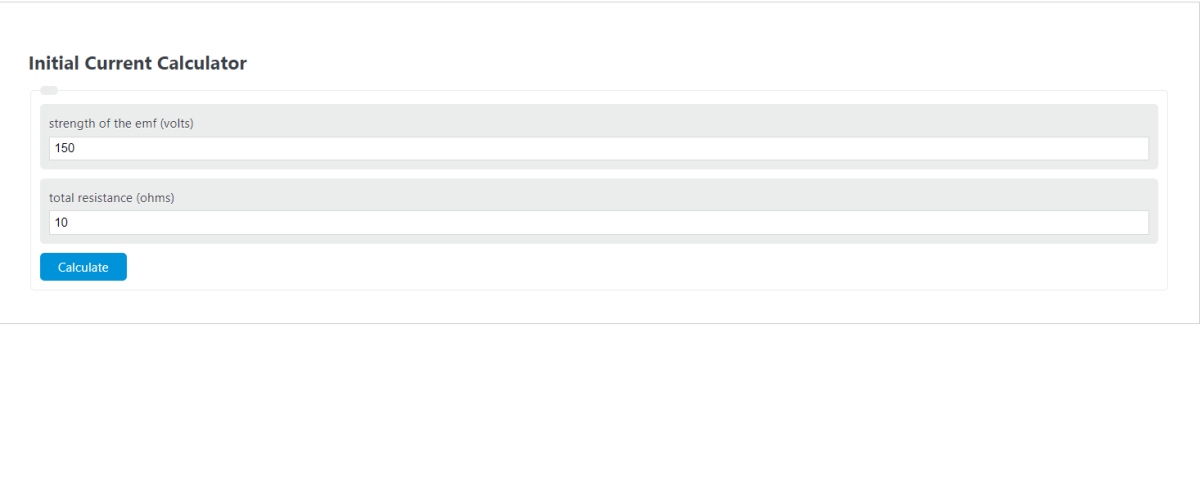Enter the strength of the emf (volts) and the total resistance (ohms) into the calculator to determine the Initial Current.
- All Electrical Calculators
- Terminal Voltage Calculator
- Electromotive Force Calculator
- Armature Current Calculator
- Charge to Current Calculator
Initial Current Formula
The following formula is used to calculate the Initial Current.
Ii = EMF / R
- Where Ii is the Initial Current (amps)
- EMF is the strength of the emf (volts)
- R is the total resistance (ohms)
To calculate the initial current, divide the strength of the emf by the resistance.
How to Calculate Initial Current?
The following two example problems outline how to calculate the Initial Current.
Example Problem #1:
- First, determine the strength of the emf (volts). In this example, the strength of the emf (volts) is measured to be 90.
- Next, determine the total resistance (ohms). For this problem, the total resistance (ohms) is calculated to be 10.
- Finally, calculate the Initial Current using the formula above:
Ii = EMF / R
Inserting the values from above and solving the equation with the imputed values gives:
Ii = 90 / 10 = 9 (amps)
FAQ
What is electromotive force (EMF)?
Electromotive force (EMF) is a measurement of the energy that causes current to flow through a circuit. It is often considered the electrical “pressure” that pushes electrons through a conductor and is measured in volts.
How does resistance affect the initial current in a circuit?
Resistance opposes the flow of electric current in a circuit. According to Ohm’s Law, as the resistance in a circuit increases, the initial current decreases for a given electromotive force (EMF). Conversely, if the resistance decreases, the initial current increases.
Can the initial current formula be used for any type of circuit?
The initial current formula, Ii = EMF / R, is primarily used for simple direct current (DC) circuits. For more complex circuits, such as those with alternating current (AC) or circuits that include capacitors and inductors, additional factors must be considered, and more complex formulas are required.
